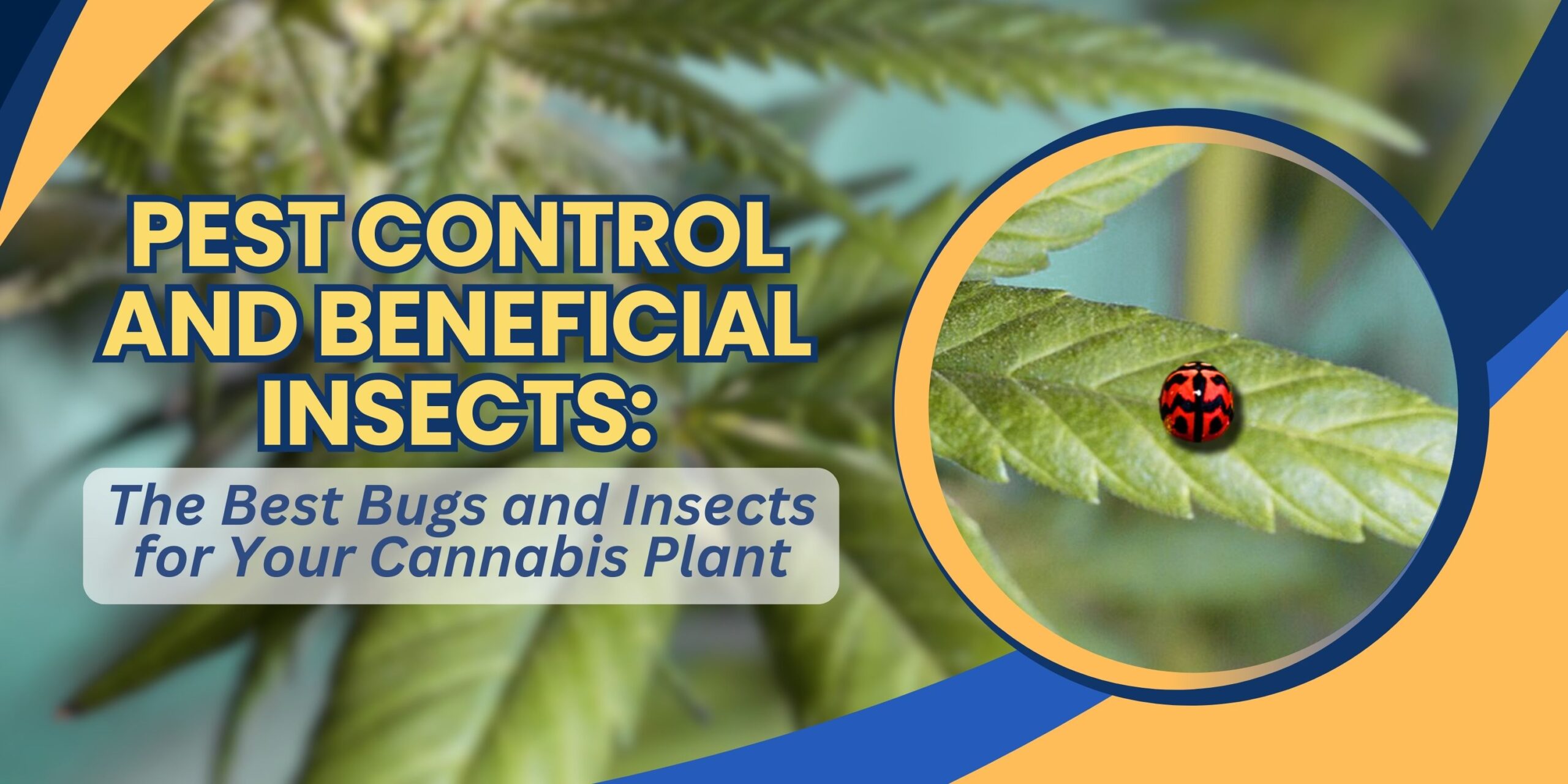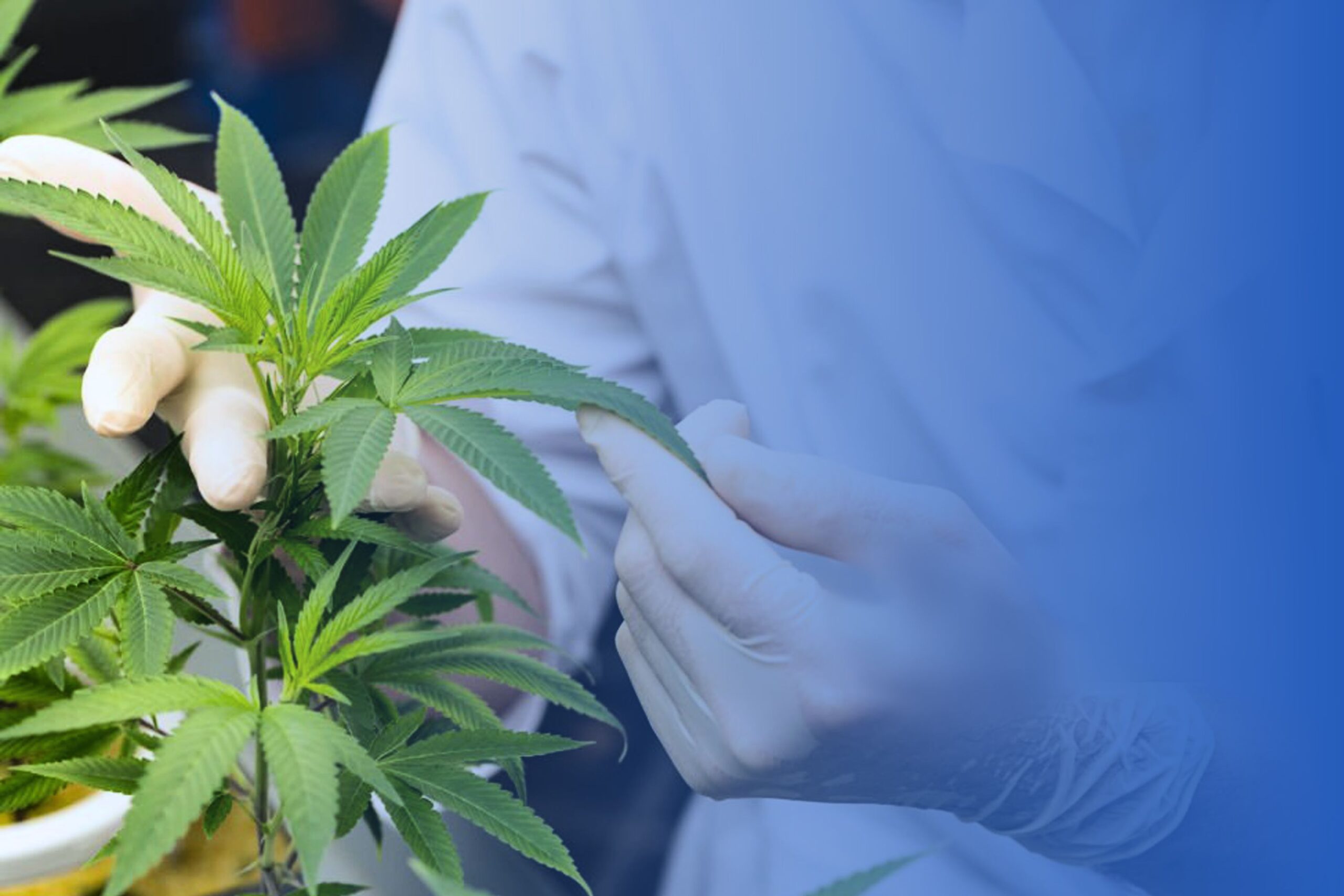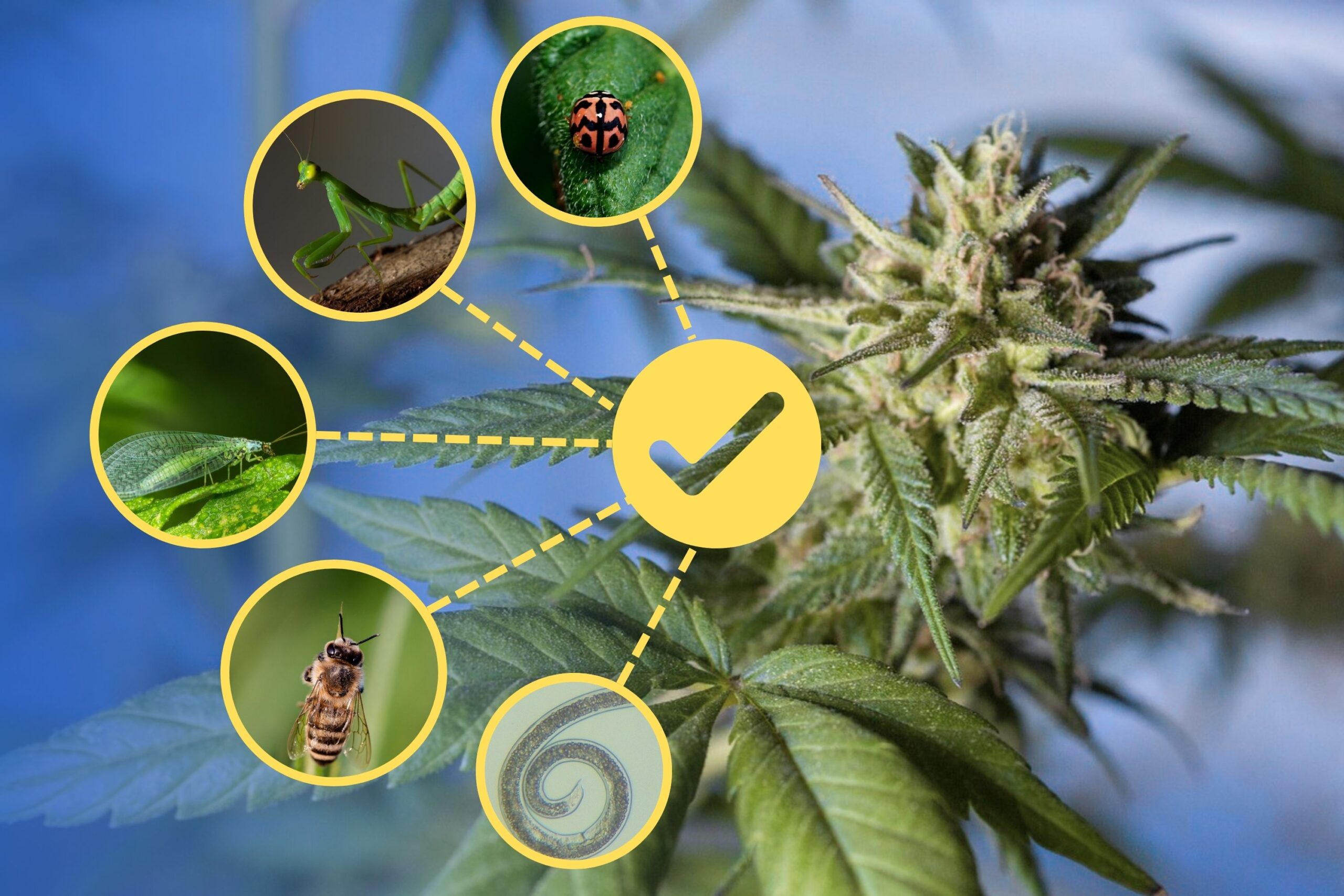Table of Contents

Healthy, high-quality output means that the plants must be maintained in an ideal condition of well-being during the whole growing season. Using good insects in your growing area is one of the most efficient and eco-friendly ways to accomplish this. These helpful insects can help to create a healthy ecology, lower the need for chemical pesticides, and fight harmful insects. Ranging from pest-eating insects that control harmful pests to growth-promoting pollinators, we discuss in this paper what bugs are good for weed plants to use for cannabis producers.

Sustainable practices are being more widely used in the cannabis industry. Integrated pest management (IPM) depends heavily on beneficial insects. These insects reduce the need for synthetic pesticides, which endanger plant health and the environment, by providing a natural, chemical-free way to control pests. Maintaining a balance of natural predators can help you manage insect populations and promote a good growth environment that benefits your cannabis plants.
Using good insects not only guards plants from a great range of typical pests but also encourages biodiversity in your garden. A varied insect population guarantees pollination, soil fertility, plant growth, and, finally, healthier, stronger cannabis plants. For the cannabis grower, the presence of helpful insects can mean increased yields, higher cannabinoid and terpene levels, and a cleaner, more sustainable production operation.

1. Ladybugs (Coccinellidae)
Ladybugs are likely the most often utilized beneficial insect and the preferred choice of cannabis growers. All three can destroy your cannabis: these little yet powerful beetles are natural predators of aphids, mealybugs, and spider mites. Among the greatest natural pest management tools known, each bug on cannabis eats up to 50 aphids daily.
Apart from their insatiable hunger for insects, ladybugs also lay eggs close to where aphid infestations may be observed, hence providing a natural pest control mechanism with a constant path. Are Ladybugs good for weed plants? Ladybugs are extremely useful, being even more vicious than adults while hunting aphids and other small insects.
2. Praying Mantises (Mantodea)
Praying mantis strains are among the best natural pest controllers for bigger pests in a cannabis crop. Unlike other insects, mantises are ambushers who utilize their powerful forelegs to smother their victims. They will eat a variety of autoflower pests, from moths to grasshoppers, flies, and even little rodents. They are consequently quite important in getting rid of more tenacious or aggressive pests that smaller beneficial insects would not so readily eradicate.
Using praying mantises, however, requires some consideration. Being lonely animals that occasionally consume each other, their population has to be closely watched. Mantises are not usually successful against extremely tiny or tightly hidden bugs inside plant structures. Their function in pest control for bigger pests should not be ignored, and it will help to have a more diverse and balanced pest control approach.
3. Green Lacewing Larva (Chrysoperla carnea)
Green lacewing larvae might be the best and most often employed predators for controlling cannabis pests. Tiny but very powerful larvae consume aphids, whiteflies, mealybugs, and other sap-sucking insects usually seen on cannabis plants. Because they have a strong hunger for feeding on enormous amounts of pests in a short time, green lacewing larvae can be quite effective at controlling them.
Active and covering most of your growing area, these larvae hunt pests on cannabis plant leaves and stems. Lacewing larvae are quite efficient in both soil and hydroponics and, therefore, flexible for various growing techniques. High-intensity foraging is their activity, which allows them to lower the pest population in a fairly short period.
Green lacewings not only reduce pests but are also environmentally friendly and cause little harm to non-target species. Usually released in numbers aimed at overwhelming their target, green lacewings consume well and then die themselves, preserving a nice balance of other creatures. Green lacewings would be ideal for every farmer wishing to lower pesticide use and yet obtain good pest control.
4. Hymenoptera: Parasitic Wasps
A wide range of tiny, specialist wasps called parasitic wasps are employed to manage particular cannabis farming pests. Their eggs are laid in or on the bodies of host insects, including aphids, spider mites, and whiteflies. Hatching larvae devour the host insect inside, hence removing the infestation without harming your plants.
Their specificity may be one of the most important benefits of parasitic wasps. Every parasitic wasp species targets a particular pest, making them rather good at managing localized epidemics. For instance, Aphidius colemani targets aphids, while Encarsia formosa is quite successful against whiteflies.
Often,non-intrusive, parasitic wasps will not harm plants or helpful insects. For farmers seeking a subtle and chemical-free approach to pest management, they are a great option. Furthermore, parasitic wasps breed fas, so following the introduction in your garden, they can keep offering pest management all year round.
5. Nematodes (Steinernema spp.)
Small, ground-dwelling worms called beneficial nematodes are great choices for managing ground-dwelling pests. Beneficial nematodes can be used to control root-feeding insects such as ground-dwelling larvae, fungus gnats, and root aphids.
When nematodes are added to the soil, they actively assault and parasitize insects. Once they have found their host, they infect the pest with bacteria, which kills the pest and lowers the population of pests in the soil. Nematodes are very effective in controlling challenging pests using flying insect predators. Their small size and ability to target certain soil pests make them a key component of any integrated pest control.
Evaluate Pest Populations
You should first evaluate your pest populations before adding good insects. Not all pests will need the same sort of insect; knowing what the specific pest problems are in your cannabis grow will help you make excellent choices. Look for pest infestation on your plants on a frequent basis, including yellowing foliage, webbing, or actual insects. Early detection of the pest species will guarantee that the beneficial insects you release are suitable for the issue.
In some situations, you have to track pest numbers over time to understand the degree of infestation. Examining pest activity and tracking the numbers helps you understand the right moment to introduce helpful insects so they may operate properly. The moment of release may be a deciding element in your pest control success.
Timing of Release
The timing of release is crucial when releasing helpful insects. Releasing them too late could cause the pest population to already be out of control, and the insects would find it difficult to catch up. On the other hand, introducing helpful insects too soon, before any pests, implies they will not survive long enough to do any good. Helpful insects should be introduced at the early phases of pest infestation when their populations are just starting to rise but have not yet reached massive infestation levels.
While others, like parasitic wasps, should be released while pests are at the stage of life suitable for parasitism, some helpful insects, like ladybugs, can be released at any time throughout the pest life cycle. You have to expect and know the life cycle of the pest so that you let the useful insects out when they are most required.
Establish a Good Environment
Once you let loose good insects, you have to provide them with a proper atmosphere for them to live and flourish. They need the right humidity, temperature, and food supply. Make sure your grow room or outdoor garden has enough refuge, such as plants or items where they may retreat, and food, such as aphids or other insects, to maintain their populations.
Moreover, avoid using chemical pesticides that can endanger your helpful insects. Rather, use non-toxic or organic pest management techniques to have a healthy and pest-free environment without compromising the efficacy of your natural predators. This will help your good insect population to expand and keep controlling pests on your cannabis plants.

Curious about growing weed in a healthy, effective way? Welcome to the realm of weed hydro! This method uses water instead of soil, delivering n

Peyote Zkittlez is a unique cannabis strain that has quickly gained dedicated followers among enthusiasts and patients alike. Its parentage—Zk

As growers, we want strains that work well, are strong, and are of good quality. Autoflowering cannabis strains are a big step forward for both

Pot growers always ask the same basic question: How much weed does a weed plant produce? The answer is complex and depends on a multitude of var

Ever had the room spin after a few hits? You're not alone. Figuring out how to prevent getting dizzy high can make your cannabis experience a wh

Drying cannabis properly is a critical process in preserving the plant's full aroma and flavor and its psychoactive abilities. Tampering with th

Ever caught yourself a bit too high and all of a sudden in need of being normal? Whether you're heading out for munchies or bumping into someone

Looking for sage advice on how not to get pinched with weed without batting an eye? Attempting to protect your stash from gossipy roommates, sno

Nutrient lockout, also known as nutrient binding or chemical antagonism, is a significant issue in cannabis cultivation that negatively impacts

Germination is the most critical initial stage in growing healthy, high-quality cannabis plants. During germination, the dormant seed becomes a
Are You 18 Or Over?
By selecting “Continue”, you confirm that you are at least 18 years of age and legally permitted to access cannabis related content in your region.
By using Rocketseeds.com, you agree to our legal disclaimer.
Excellent blog here Also your website loads up very fast What web host are you using Can I get your affiliate link to your host I wish my web site loaded up as quickly as yours lol
Your writing is not only informative but also incredibly inspiring. You have a knack for sparking curiosity and encouraging critical thinking. Thank you for being such a positive influence!
Simply wish to say your article is as amazing The clearness in your post is just nice and i could assume youre an expert on this subject Well with your permission let me to grab your feed to keep updated with forthcoming post Thanks a million and please carry on the gratifying work
Somebody essentially lend a hand to make significantly articles Id state That is the very first time I frequented your website page and up to now I surprised with the research you made to make this actual submit amazing Wonderful task
Your blog is a beacon of light in the often murky waters of online content. Your thoughtful analysis and insightful commentary never fail to leave a lasting impression. Keep up the amazing work!
Thank you for the auspicious writeup It in fact was a amusement account it Look advanced to more added agreeable from you By the way how could we communicate
Your blog is a constant source of inspiration for me. Your passion for your subject matter shines through in every post, and it’s clear that you genuinely care about making a positive impact on your readers.
Your blog is a constant source of inspiration for me. Your passion for your subject matter is palpable, and it’s clear that you pour your heart and soul into every post. Keep up the incredible work!
Your articles never fail to captivate me. Each one is a testament to your expertise and dedication to your craft. Thank you for sharing your wisdom with the world.
Your blog is a testament to your dedication to your craft. Your commitment to excellence is evident in every aspect of your writing. Thank you for being such a positive influence in the online community.
Your writing has a way of resonating with me on a deep level. I appreciate the honesty and authenticity you bring to every post. Thank you for sharing your journey with us.
Your blog is a true gem in the world of online content. I’m continually impressed by the depth of your research and the clarity of your writing. Thank you for sharing your wisdom with us.
Hi i think that i saw you visited my web site thus i came to Return the favore Im attempting to find things to enhance my siteI suppose its ok to use a few of your ideas
Somebody essentially help to make significantly articles Id state This is the first time I frequented your web page and up to now I surprised with the research you made to make this actual post incredible Fantastic job
Usually I do not read article on blogs however I would like to say that this writeup very compelled me to take a look at and do so Your writing taste has been amazed me Thanks quite nice post
Your blog has quickly become one of my favorites. Your writing is both insightful and thought-provoking, and I always come away from your posts feeling inspired. Keep up the phenomenal work!
Every time I visit your website, I’m greeted with thought-provoking content and impeccable writing. You truly have a gift for articulating complex ideas in a clear and engaging manner.
Hey there You have done a fantastic job I will certainly digg it and personally recommend to my friends Im confident theyll be benefited from this site
I have read some excellent stuff here Definitely value bookmarking for revisiting I wonder how much effort you put to make the sort of excellent informative website
Nice blog here Also your site loads up very fast What host are you using Can I get your affiliate link to your host I wish my site loaded up as quickly as yours lol
What i do not understood is in truth how you are not actually a lot more smartlyliked than you may be now You are very intelligent You realize therefore significantly in the case of this topic produced me individually imagine it from numerous numerous angles Its like men and women dont seem to be fascinated until it is one thing to do with Woman gaga Your own stuffs nice All the time care for it up
Your blog is a beacon of light in the often murky waters of online content. Your thoughtful analysis and insightful commentary never fail to leave a lasting impression. Keep up the amazing work!
Your blog is a breath of fresh air in the often stagnant world of online content. Your thoughtful analysis and insightful commentary never fail to leave a lasting impression. Thank you for sharing your wisdom with us.
Your blog is a beacon of light in the often murky waters of online content. Your thoughtful analysis and insightful commentary never fail to leave a lasting impression. Keep up the amazing work!
Usually I do not read article on blogs however I would like to say that this writeup very compelled me to take a look at and do it Your writing style has been amazed me Thank you very nice article
Your writing has a way of resonating with me on a deep level. I appreciate the honesty and authenticity you bring to every post. Thank you for sharing your journey with us.
This hydroponics guide is quite the buzz, seriously! Who knew growing weed without dirt could be so complicated yet potentially rewarding? The breakdown of systems like DWC and NFT is helpful, though I suspect my cat might confuse the air pump for a toy. The idea of cleaner buds is tempting, especially since explaining hydro weed to my non-growing friends might get messy. And the bit about potential dizziness from hydro weed? Perfect, now I have an excuse for why I always stumble a bit after a grow session. Still, the promise of faster grows and higher yields is hard to ignore, even if it means more trips to the pH meter than to the coffee shop. Overall, a cultivating read for the curious grower!